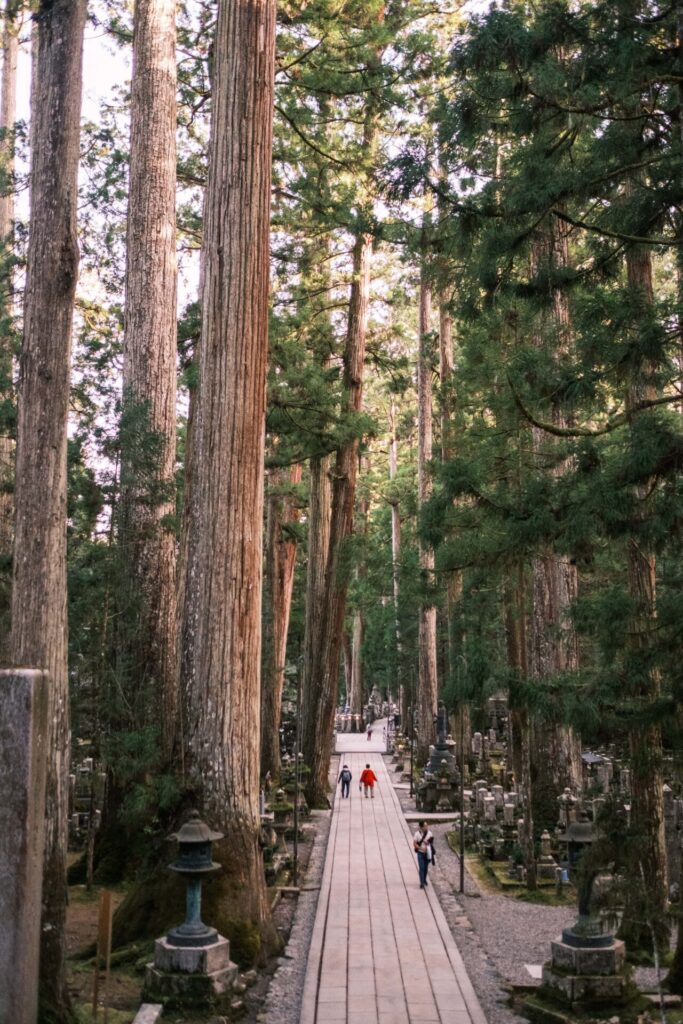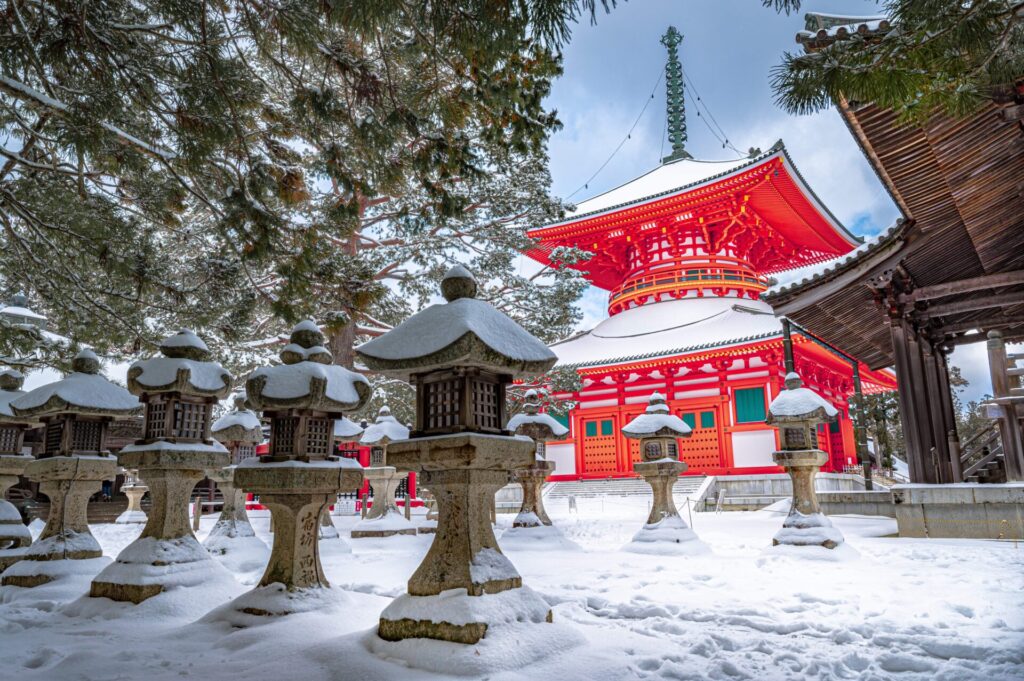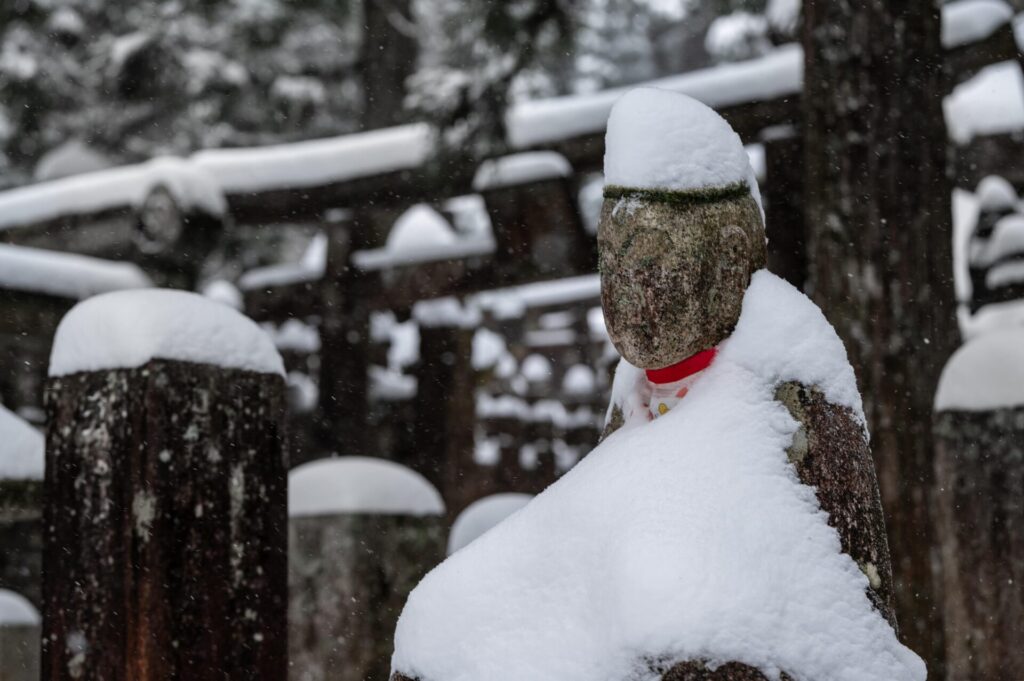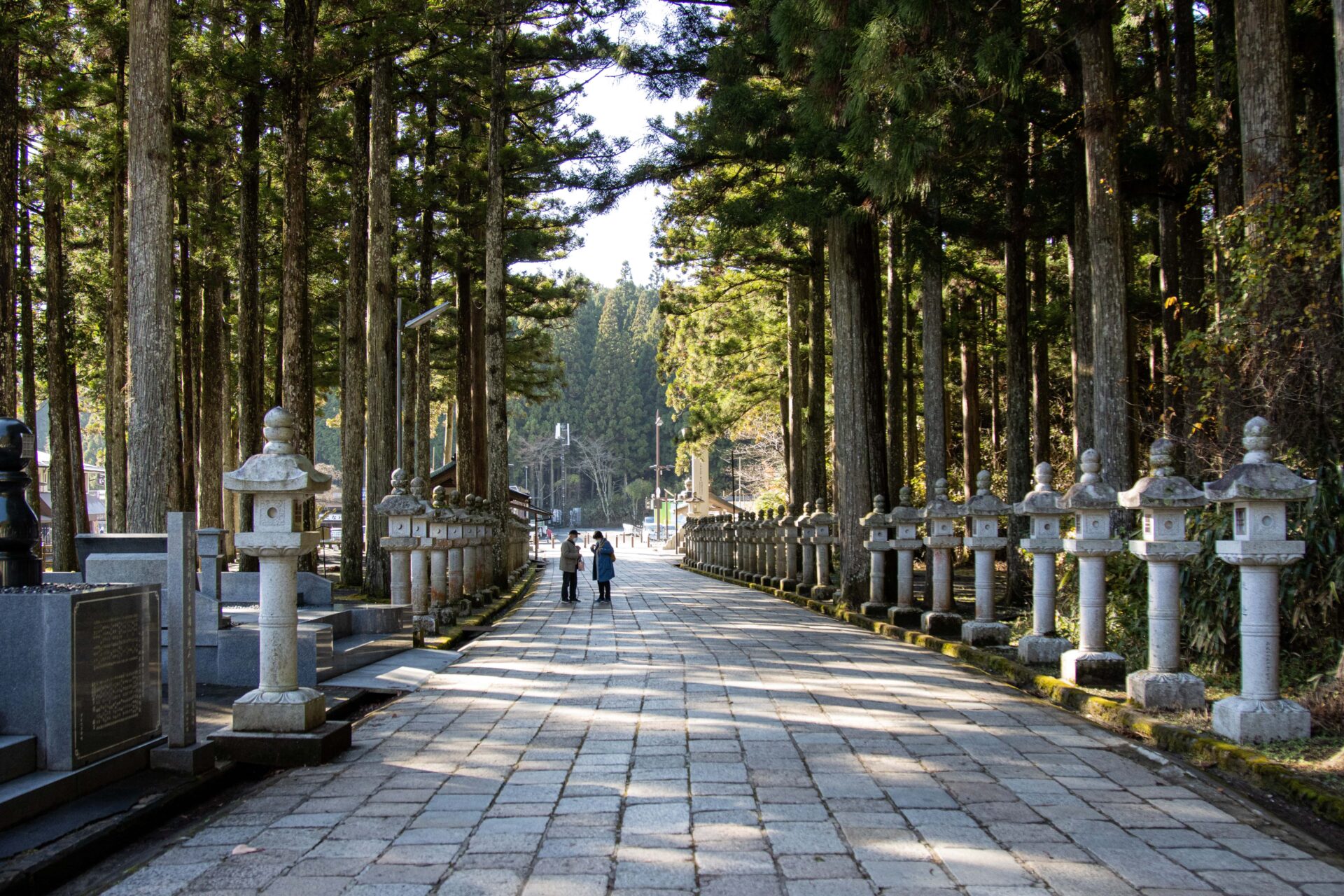Koyasan, a World Heritage Site

Koyasan was registered as a World Heritage site in 2004 as “Sacred Sites and Pilgrimage Routes in the Kii Mountain Range.”
It is said to have been founded by Kukai more than 1,200 years ago.
The main hall is called “Kondo,” and Koyasan preaches the teachings and traditions of Shingon Esoteric Buddhism, based on the idea that the entire mountain is a temple.
Mysterious stories about the founding of Koyasan

Koyasan was founded by Kukai.
Kukai went to Tang China (present-day China) to study, and when he returned from his study, he threw Sanko, praying, “Please show me the place where the temple complex will be built. (Garan refers to the place where monks gather to practice asceticism, and Sanko is a tool made of precious metal used in esoteric Buddhist practices.)
On his way to the place where Sanko fell, Kukai met a hunter with a bow and arrows in his hand and two dogs, one black and the other white.
The hunter said that the dogs knew the place where the temple complex was built.
Kukai followed the dogs as the hunter told him to, and as he walked through the mountains, he met a woman.
The woman showed Kukai a certain place and said that the place was her territory and that she would give it to Kukai. When Kukai went to the place the woman showed him, he found Sanko he was looking for hooked to a pine tree.
Curious, Kukai inquired about the woman’s true identity, and she told him that both the hunter and the woman were deities.
Curiously, Kukai met God as he was being guided and was guided to the site of the founding of the temple.
From this series of events, Kukai decided that this was the right place for Shingon Esoteric Buddhism and decided to establish the temple.
Kukai’s Trail

Kukai was born on June 15, 744 A.D. in Zentsuji City, Kagawa Prefecture, into a family of county governors.
There is a temple in Zentsuji City called Zentsuji Temple, which is known as the birthplace of Kukai.
He was named “Mao” (meaning “Real fish” in Japanese) and was raised with great care.
Kukai was a little different from other children even as a child, and he played with soil, plants, and trees to make Buddhist statues and halls.
He was also interested in helping people from an early age.
He was a good student, and while being taught various teachings, he came across Buddhism.
While he was unable to find a satisfactory teaching, he heard that there was a famous monk in Tang (China), and at the age of 31, he traveled to Tang with the Japanese envoy to the Tang Dynasty.
Upon his arrival in Tang China, Kukai met the monk Keikatsu in Chang’an.
He became Kukai’s teacher and handed down the teachings of Shingon esoteric Buddhism to Kukai.
When he had taught Kukai everything he knew, he reached the end of his life.
Kukai received the last will and testament of the monk and became the eighth founder of Shingon Esoteric Buddhism, and decided to return to Japan to spread the Shingon doctrine of Minori.
Upon his return to Japan, Kukai obtained the permission of Emperor Saga to spread the Shingon sect.
He prayed daily for people’s happiness and strove to purify the world.
Various anecdotes of Kukai at that time, such as causing various trails and offering salvation to people, are still told today. Kukai’s devotion to the people earned him the trust of the emperor, and in 823 A.D., Emperor Saga gave him the Toji Temple in Kyoto.
In 816 A.D., Kukai founded Koyasan. Koya as the fundamental center of Shingon esoteric Buddhism and strove to preach his teachings throughout the country.
In 835 A.D., Kukai decided to enter the temple and entered the sacred cave at the inner sanctuary.
It is believed that Kukai is still alive today, more than 1,100 years after his initiation, and food is brought to the inner sanctuary twice daily.
Name: Koyasan
Location: 600, Koyasan, Koyamachi, Ito-gun, Wakayama


